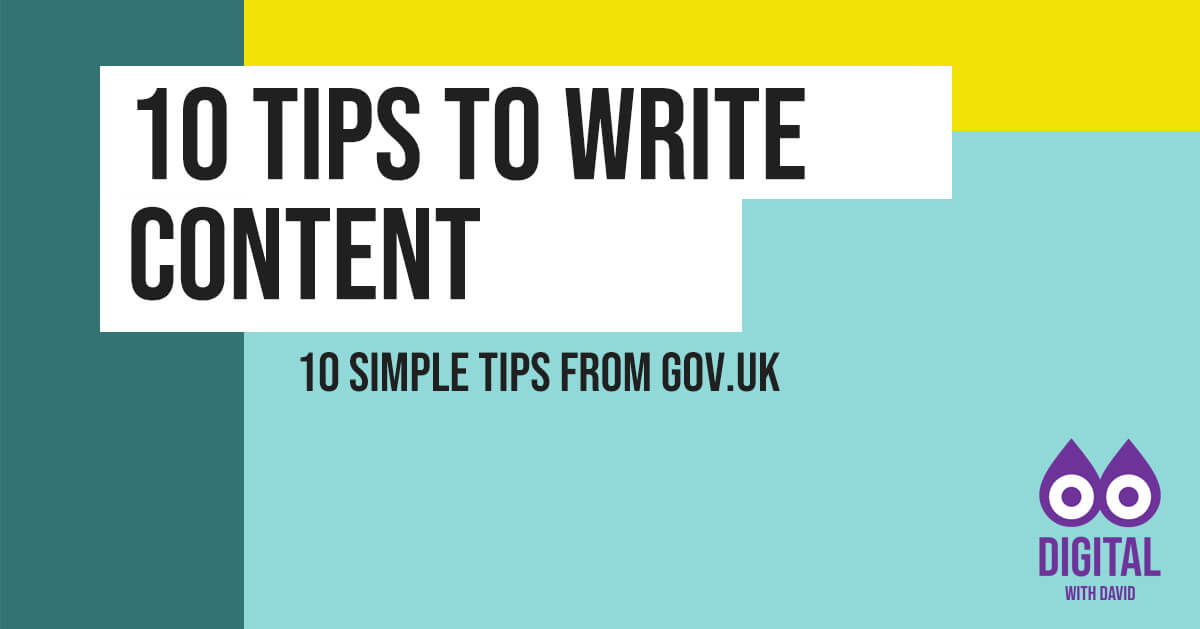10 simple tips if you need to write a blog post, presentation or any piece of content that you want people to engage with.

1. Establish ‘The Point’
Don’t write anything until you establish ‘The Point’: what you want to say and why it needs to be said. Once you know the answers to those 2 things, write them down. Keep The Point close to you as you write. It’ll keep you focused, concise and motivated.
2. Write it as you’d say it
If you’re trying to describe a difficult technical concept, then explain as you would to a friend. Try saying the sentence out loud before you write it down.
3. Don’t try to sound clever
Don’t use ornate sentence constructions or complex words. Don’t use acronyms or jargon either. You’re writing to be read, so make your writing as readable to as many people as possible.
4. Show the thing
If you’re trying to tell someone about a product or a service, show it. Explain how it works, say what it is, don’t use metaphors, don’t dress it up.
5. Know that you are not your writing
Yes, your writing has come out of your head and through your hands, and it’s informed by the experiences you’ve had, but it is a separate entity. Once you understand that, negative feedback won’t derail you. You will view your work dispassionately, and be better able to focus on making your writing as clear and effective as it can be.
6. Share your work
Sharing your work will give you the clarity and perspective you lack if you write in isolation. Asking for feedback is daunting, so let people know what the purpose of the piece is and how you’d like to receive feedback.
7. Read (poetry in particular)
Read widely. You’ll get a sense of what good and bad writing is, what to do and what to avoid. Poetry, in particular, can teach you about conveying complex ideas in a limited space. It can also teach you about the music of a sentence and how a piece scans.
8. Never start with a blank page
A blank page can be daunting. So write something down. We suggest writing down The Point (see point 1). Write a working title. Paste your notes into the doc. Write down all the information you have about your audience. Then at least you’ll have made a start.
9. Know when enough is enough
This means don’t overdo it and don’t underdo it. Write enough. Refer to The Point (point 1). Have you achieved what you set out to do? If you have, step away from the doc. If you haven’t, go back and fill in the gaps. Imagine you are a reader or the person in the audience. Would they be satisfied with the level of detail?
10. Stay human
When you write, you (a human being) are conveying an idea to another human being. Writing is a skill that takes time to develop so don’t be too hard on yourself. Do your best and be kind when giving feedback.
Original author / source: GOV.UK